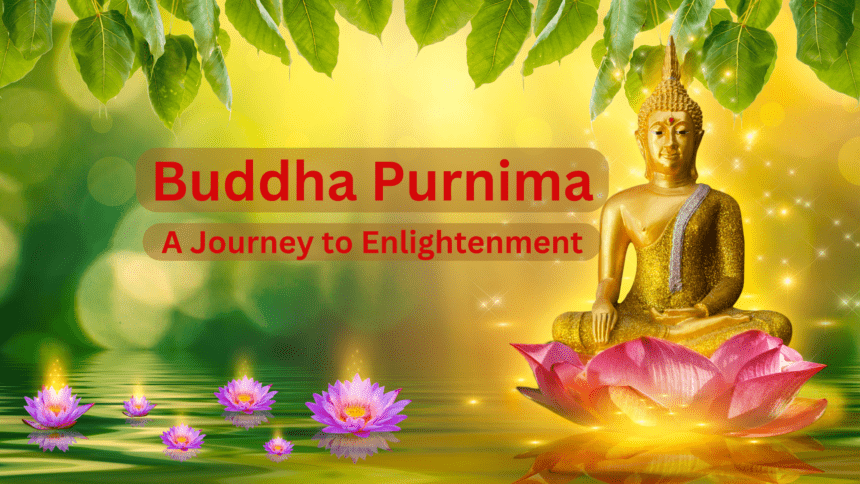Buddha Purnima, also known as Vesak, is one of the most sacred days in the Buddhist calendar. Celebrated by millions across the globe, it marks the birth, enlightenment, and death of Siddhartha Gautama, the Buddha. This day, filled with rituals and reverence, offers a moment to reflect on the teachings of Buddhism and their impact on personal and societal transformation.
Historical Background of Buddha Purnima
Origin and Evolution
Buddha Purnima traces its roots back over 2,500 years. Originating in ancient India, it has evolved over centuries, absorbing local customs and traditions as Buddhism spread across Asia and beyond. The celebration has remained a cornerstone of Buddhist culture, maintaining its spiritual essence while adapting to changing times.
The Life of Siddhartha Gautama
Siddhartha Gautama, born in Lumbini (present-day Nepal), renounced his princely life in search of spiritual enlightenment. His journey led him to Bodh Gaya, where under the Bodhi tree, he attained Nirvana. His teachings laid the foundation for Buddhism, emphasizing the path to liberation through wisdom, ethical conduct, and mental discipline.
Significance of Buddha Purnima
Spiritual Importance
Buddha Purnima is a day of profound spiritual significance. It commemorates the three pivotal events in the Buddha’s life: his birth, enlightenment, and passing away (Parinirvana). For practitioners, it is a time to renew their commitment to the Buddha’s teachings and to reflect on their spiritual journey.
Cultural Impact
Beyond its religious implications, Buddha Purnima has a deep cultural impact. It fosters a sense of unity and peace, transcending cultural boundaries. Festivals, parades, and communal meals are common, highlighting the values of compassion and understanding central to Buddhism.
Rituals and Traditions
Traditional Practices
Traditional practices on Buddha Purnima include visiting temples, offering prayers, and meditating. Devotees often participate in processions carrying statues of the Buddha, accompanied by chants and hymns. Ritual bathing of Buddha statues symbolizes purification and renewal.
Modern Observances
In contemporary settings, Buddha Purnima has embraced modern elements. Online streaming of ceremonies, digital prayer sessions, and social media campaigns promote the celebration globally. These innovations ensure the traditions remain accessible in today’s digital age.
Celebrations Around the World
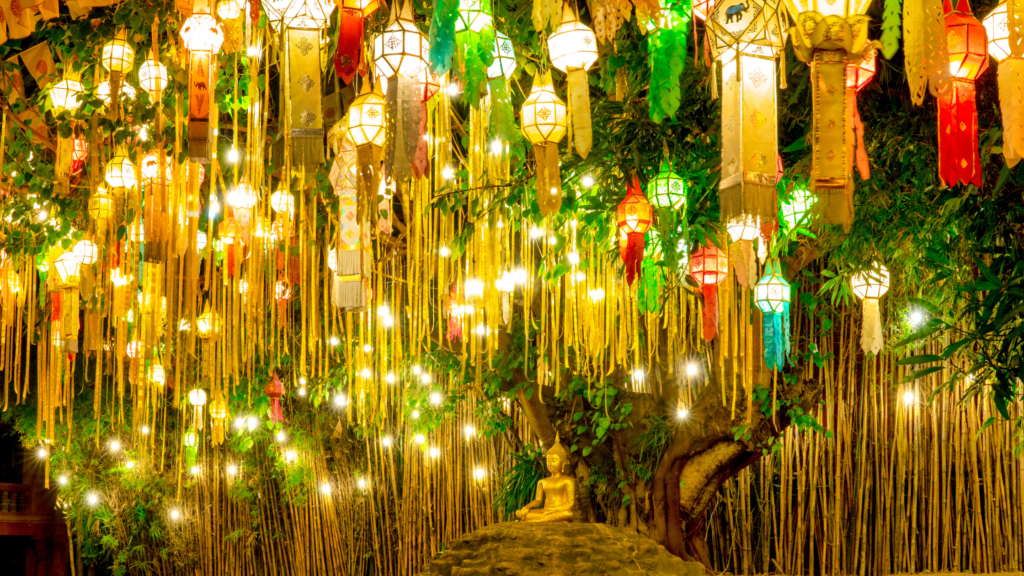
South Asia
In South Asia, particularly in India, Nepal, and Sri Lanka, Buddha Purnima is celebrated with grand fervor. Pilgrims throng to significant Buddhist sites like Bodh Gaya, Lumbini, and Kandy to partake in elaborate rituals and festivals.
Southeast Asia
Countries like Thailand, Myanmar, and Cambodia observe Buddha Purnima with vibrant ceremonies. Temples are adorned with lights and decorations, and large-scale public gatherings feature processions, dances, and theatrical performances depicting the Buddha’s life.
Western Countries
In Western countries, Buddhist communities celebrate Buddha Purnima through meditation retreats, dharma talks, and cultural programs. These events foster interfaith dialogue and promote a deeper understanding of Buddhist philosophy.
Symbolism in Buddha Purnima Celebrations
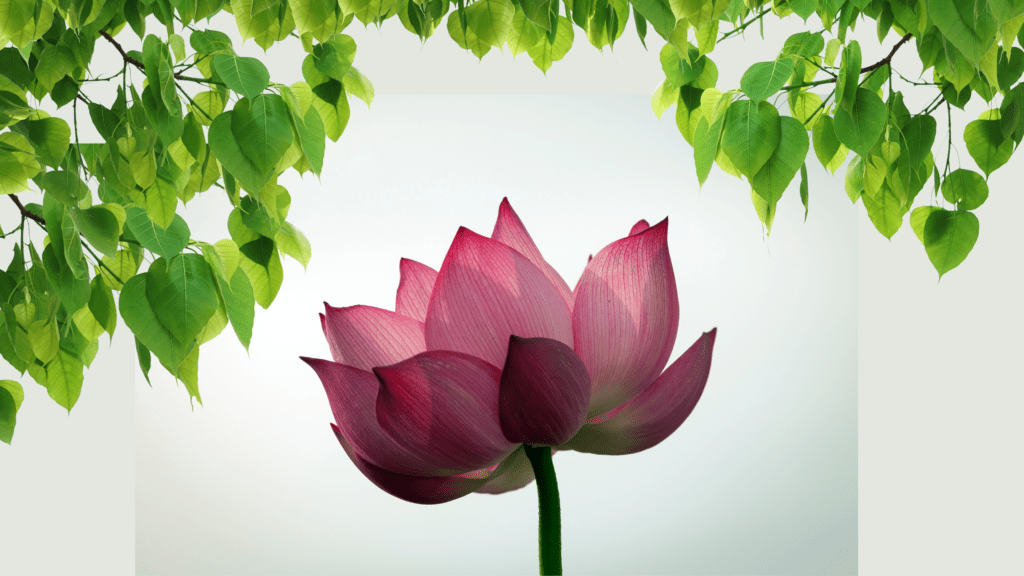
Lotus Flower
The lotus flower, a symbol of purity and enlightenment, is central to Buddha Purnima. Its journey from muddy waters to full bloom mirrors the spiritual path from ignorance to enlightenment.
Bodhi Tree
The Bodhi tree, under which Buddha attained enlightenment, is another powerful symbol. Saplings and leaves from the original tree are venerated, and many temples cultivate their own Bodhi trees as symbols of wisdom and perseverance.
The Teachings of Buddha
Four Noble Truths
The Four Noble Truths form the foundation of Buddha’s teachings. They outline the nature of suffering, its cause, its cessation, and the path leading to its cessation, offering a pragmatic framework for understanding and overcoming life’s challenges.
Eightfold Path
The Eightfold Path prescribes a practical guide to ethical and mental development. Comprising right view, right intention, right speech, right action, right livelihood, right effort, right mindfulness, and right concentration, it directs practitioners towards a balanced and harmonious life.
Meditation and Mindfulness on Buddha Purnima
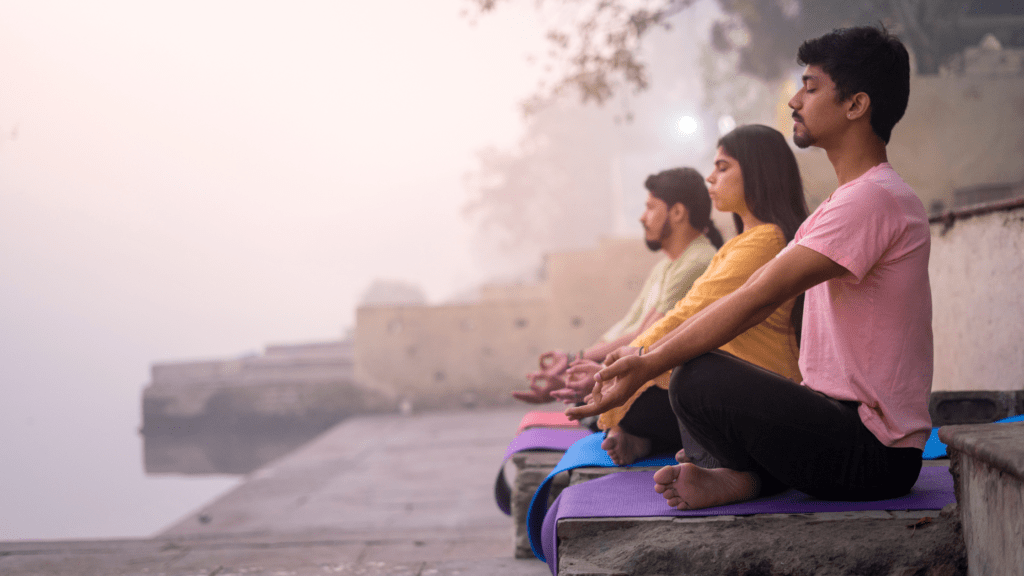
Importance of Meditation
Meditation is a cornerstone of Buddha Purnima celebrations. It fosters inner peace, clarity, and a deeper connection to the Buddha’s teachings. On this day, extended meditation sessions are common, allowing practitioners to delve deeply into their practice.
Techniques Practiced
Various meditation techniques are employed, from mindfulness of breathing (Anapanasati) to loving-kindness (Metta) meditation. These practices aim to cultivate awareness, compassion, and insight, aligning with the core principles of Buddhism.
Buddhist Temples and Monasteries
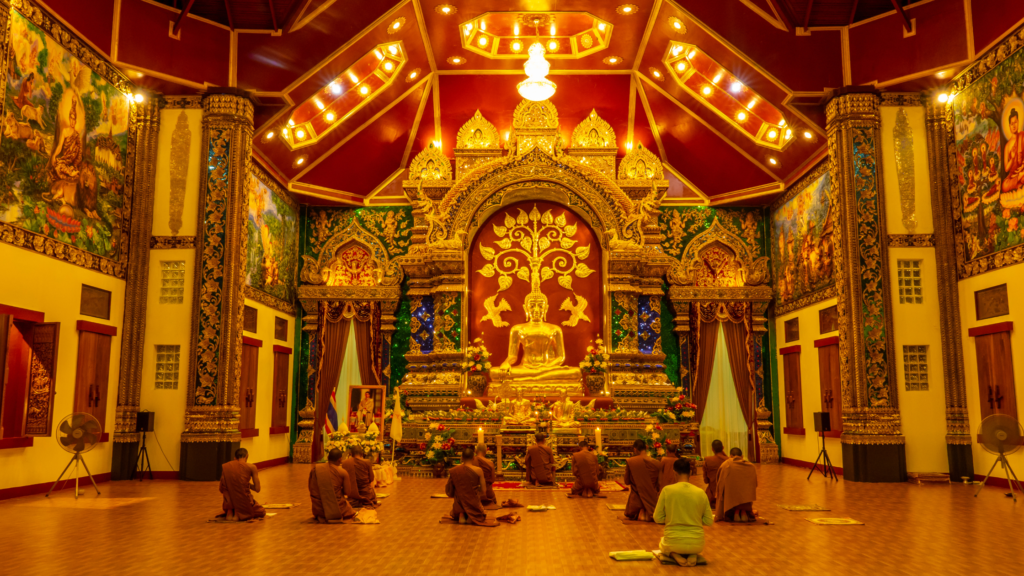
Famous Sites
Temples and monasteries play a pivotal role during Buddha Purnima. Notable sites include the Mahabodhi Temple in Bodh Gaya, the Shwedagon Pagoda in Myanmar, and the Temple of the Tooth in Sri Lanka. These sacred places attract thousands of pilgrims each year.
Pilgrimages
Pilgrimages to these sites are a significant aspect of Buddha Purnima. Devotees undertake these journeys to pay homage, seek blessings, and deepen their faith. Such pilgrimages often include ritual circumambulations and offerings.
The Role of Monks and Nuns

Duties and Responsibilities
Monks and nuns are integral to Buddha Purnima, leading rituals, offering teachings, and providing spiritual guidance. Their presence reinforces the communal and contemplative aspects of the celebration.
Community Engagement
Beyond religious duties, monks and nuns engage in community service, emphasizing the Buddhist principle of compassionate action. They organize charitable activities, health camps, and educational programs, embodying the spirit of selfless service.
Buddha Purnima in Literature and Art
Depictions in Literature
Buddha Purnima has inspired a rich body of literature. Texts like the Jataka tales, which recount the Buddha’s past lives, and modern novels explore the festival’s themes of enlightenment and compassion.
Artistic Representations
Artistic depictions of Buddha Purnima abound, from traditional Thangka paintings to contemporary installations. These artworks, often rich in symbolism, capture the essence of the festival and its teachings.
Dietary Practices and Festive Foods
Vegetarianism
Vegetarianism is commonly observed during Buddha Purnima as a mark of respect for all living beings. This practice aligns with the Buddhist principle of Ahimsa (non-violence).
Traditional Dishes
Festive foods include a variety of vegetarian dishes, such as lentil soups, rice preparations, and sweets. These meals, often shared in communal gatherings, reflect the spirit of fellowship and gratitude.
Charity and Almsgiving
Acts of Kindness
Charity is a central aspect of Buddha Purnima. Acts of kindness, such as distributing food, clothing, and medicines to the needy, embody the Buddha’s teachings on compassion and generosity.
Social Impact
These charitable activities have a lasting social impact, addressing immediate needs and fostering a culture of care and empathy within communities.
Environmental Initiatives
Green Celebrations
Increasingly, Buddha Purnima celebrations are incorporating environmental initiatives. Practices like tree planting, plastic-free events, and conservation drives highlight the Buddhist commitment to environmental stewardship.
Conservation Efforts
Conservation efforts, such as protecting sacred groves and promoting sustainable living, are gaining prominence. These initiatives align with the broader Buddhist ethos of living harmoniously with nature.
Top 5 Devotional Songs Played on Buddha Purnima
1. Buddham Saranam Gacchami
“Buddham Saranam Gacchami” is a deeply revered chant that translates to “I take refuge in the Buddha.” It serves as a solemn reminder of one’s commitment to the path of enlightenment and is often played during meditation sessions and rituals on Buddha Purnima.
2. Buddha Vandana
“Buddha Vandana” is a devotional song that pays homage to the Buddha. It extols his virtues and recounts his journey to enlightenment, offering inspiration and reverence to practitioners. Its melodic verses create a serene atmosphere conducive to contemplation and worship.
3. Namo Buddhaya
“Namo Buddhaya” is a simple yet powerful chant that means “Homage to the Buddha.” This song is frequently sung in temples and during public gatherings on Buddha Purnima, uniting voices in a collective expression of devotion and respect.
4. Jaya Buddha
“Jaya Buddha” celebrates the victory of the Buddha over ignorance and suffering. Its uplifting lyrics and rhythm inspire joy and reverence, making it a popular choice for processions and festive events during the celebrations.
5. Buddham Bhajami
“Buddham Bhajami” translates to “I worship the Buddha.” This devotional song is characterized by its soulful and contemplative nature, encouraging introspection and a deeper connection to the Buddha’s teachings. It is often played during meditation and prayer sessions.
Stories and Parables of Buddha
Jataka Tales
The Jataka tales, a collection of stories about the previous lives of the Buddha, are often recited during Buddha Purnima. These stories, rich with moral lessons, illustrate the virtues of patience, generosity, and wisdom, providing valuable insights for adherents.
Moral Lessons
The parables of the Buddha, such as the story of Angulimala and the tale of the mustard seed, offer profound moral lessons. These stories are shared to inspire ethical behavior and spiritual growth among listeners, reinforcing the principles of compassion and mindfulness.
Personal Reflections and Experiences
Stories from Devotees
Devotees often share their personal reflections and experiences on Buddha Purnima. These narratives, ranging from moments of spiritual awakening to everyday acts of kindness, highlight the transformative power of the Buddha’s teachings in individual lives.
Personal Growth
Many practitioners use Buddha Purnima as an opportunity to reflect on their personal growth over the past year. This introspection helps them identify areas for improvement and renew their commitment to the Buddhist path, fostering continuous spiritual development.
Buddha Purnima and Modern Society
Relevance Today
In today’s fast-paced world, the teachings of Buddha Purnima remain profoundly relevant. The festival’s emphasis on mindfulness, compassion, and ethical living offers valuable guidance for navigating contemporary challenges and fostering a more peaceful society.
Influence on Contemporary Thought
Buddha Purnima has influenced contemporary thought in various fields, including psychology, philosophy, and environmental ethics. Concepts like mindfulness and interdependence, rooted in Buddhist teachings, are increasingly recognized for their practical applications in modern life.
The Future of Buddha Purnima Celebrations
Emerging Trends
Emerging trends in Buddha Purnima celebrations include the incorporation of digital technologies, such as virtual reality temple tours and online meditation sessions. These innovations are making the festival more accessible to a global audience.
Technological Influence
Technological advancements are also influencing the way rituals are performed and teachings are disseminated. Digital platforms are facilitating the spread of Buddhist teachings, allowing more people to engage with the principles of Buddha Purnima in meaningful ways.
Conclusion
Buddha Purnima is a timeless celebration that honors the life and teachings of Siddhartha Gautama. It is a day of deep spiritual significance, rich cultural traditions, and profound reflections. As the world continues to evolve, the essence of Buddha Purnima remains a guiding light, offering wisdom and peace to all who embrace its teachings. Through rituals, stories, and communal activities, this sacred day fosters a sense of unity and purpose, inspiring individuals and communities to strive for a more enlightened and compassionate world.
Reference
Must read Book about Buddha: The Enlightened
Explore below links for more tourism related post:
20 Must-Visit Hill Stations in India for Nature Lovers
12 Safari in India: Exploring Wildlife and National Parks
15 Must-Visit Historical Places in India: A Journey Through Time
For more content follow Humstory






